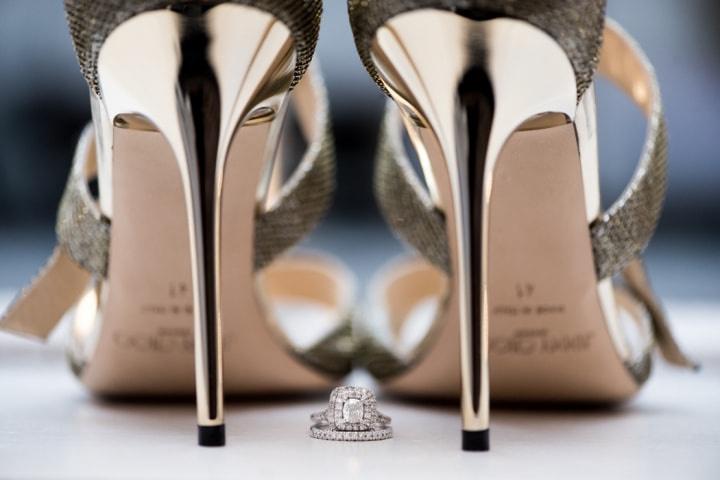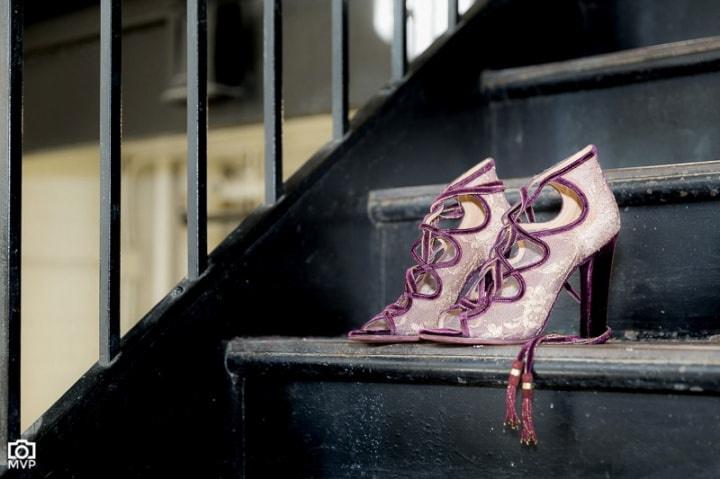Wedding Shoe Glossary
Can’t decide how to finish off your wedding look? Here’s everything you need to know about shoes before you hit the stores.

There are virtually hundreds of types of shoes available, making your footwear options nearly endless. To avoid hobbling your way down the aisle (or clutching onto your father’s arm for dear life) go with a pair that makes you feel both stable, comfortable and sexy. That could mean strutting down the aisle in six-inch stilettos or throwing on a pair of ultra-cool snow boots.
Here is your wedding shoe glossary.
Types of Shoe
Ballet flats: Similar to the slippers worn by ballet dancers. They have no heel and a rounded toe. Ideal for those who aren’t so confident in sky-high pumps.
Cowboy boots: Boots with chunky heels and decorative stitching. They’re usually made of leather and extend to the ankle or partway up the calf. Perfect for barn or rustic weddings.
Loafers: Low shoes without straps, shoelaces or buckles. Can be worn by ladies or gents.
Oxfords: Low shoes that have laces that run down the insteps. Can be worn by ladies or gents.
Pumps: High heeled shoes that typically enclose the entire foot. A very sexy option.
Sandals: Shoes that feature an open toe and back. They come in several styles, from flip flops to gladiators. They’re ideal for beach or summer weddings.
Sneakers: Casual, rubber-soled shoes. Perfect for the laid-back bride or groom.

Heels and Soles
Chunky: A thick heel that remains the same size from the base of the foot to the ground.
Cone: A triangular shaped heel that is generally quite thin at the tip and quite large at the base of the foot.
Kitten: A short heel that is typically only a few centimetres high.
Platform: The sole of the shoe is thick, offering extra support for the front of your foot. Platforms can be combined with any type of heel.
Stiletto: A thin, high heel that grows slightly larger toward the base of the shoe.
Wedge: The heel can be several inches high but has no gaps, offering stable support under all parts of the foot.

Toe
Almond toe: The front of the shoe narrows into a slightly rounded point.
Open toe: The tip of the shoe is cut away, showing some or all of the toes.
Peep toe: Only the very tip of the shoe is cut away, showing part of the toes.
Pointed toe: The front of the shoe narrows into a dramatic, sharp point.
Round toe: The front of the shoe curves around the toes.

Straps
Ankle Strap: A single strap wraps around the ankle. This can be used to keep the foot in place or just as added decoration.
Gladiators: Multiple straps cross over the foot, beginning at the toe and going up as far as the thigh.
Mary-Jane: One or more straps go across the instep of the shoe.
Slingback: A strap wraps around the ankle to hold the rest of the shoe in place.
T-Strap: One strap runs up the centre of the foot (forming the base of the “T” shape) and a second strap wraps around the ankle (forming the arms of the “T” shape).

Extras
Arch supports: Inserts that cushion the arches of your feet. They’re a life-saver if you’re opting for high heels.
Rhinestones: Diamond-like decorations that can be added to more basic shoes to give them a little bling.
Shoe brooch: A decorative pin that’s used to jazz up your footwear.

Browse our Real Wedding galleries to see what other brides are wearing »





